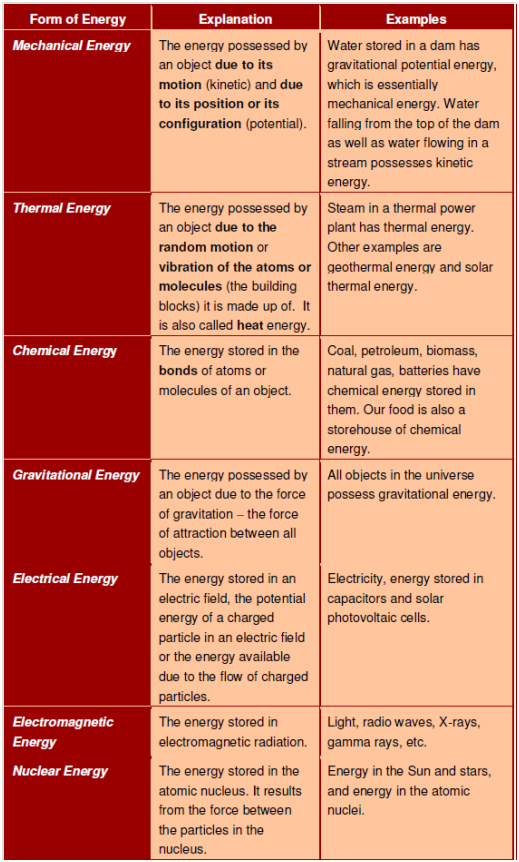Forms of Energy
Energy exists in various forms: mechanical, chemical, thermal, electrical, electromagnetic energy (example for, light, X-rays, radio waves, etc.), sound, nuclear energy, etc. You will also come across the terms kinetic energy and potential energy. We now explain these terms along with the help of specific examples relevant to the power sector.
The kinetic energy of an object is the energy possessed through it because of its motion. All material bodies in motion, for example, waves, wind, water in a stream, and the steam turning the turbine within a power plant possess kinetic energy.
The potential energy of an object is the energy possessed through an object because of its position or the arrangement of its parts. For example, water stored in a dam possesses potential energy; charges stored in a capacitor possess potential energy.
In Figure (a), the box possesses potential energy through virtue of its position at a certain height above the ground. If the rope is cut and the box falls down as display in Figure (b), its potential energy is converted within its kinetic energy. In Table, we explain the different forms of energy and provide examples relevant to the power sector.
Table: Different Forms of Energy

We display examples of several forms of energy relevant to the power sector.
In relation to energy, you also required to understand in which energy could neither be created nor destroyed. It is a law of nature in which the total amount of energy in the universe keeps constant.
Our experience makes it seem that energy has been 'consumed' or 'lost' in a procedure. For example, while a battery runs out, or a gas cylinder is used up, what happens is in which energy is converted or transformed from one form to another. For example, the chemical energy of batteries is converted within electrical energy. This, in turn, gets converted into light and heat energy of the torch bulb that is transferred to the surroundings. Therefore, the chemical energy stored in the battery gets transformed to other forms of energy and is ultimately radiated within the environment. It exists there but we could no longer make use of it. We then say that it is 'lost' to the system of 'torch and battery'. Let us take another instance: In a hydropower plant, the potential energy of water stored in a dam is converted within the kinetic energy of falling water, which is transferred to the turbine. The kinetic energy of the turbine, in turn, is transformed into electrical energy through a generator.
While we talk about "generation" and "consumption" of energy, what we are in fact describing is the conversion of one form of energy to another. In Figure, we show how energy is transformed from one form to another at several stages starting from power generation in a thermal power plant to its transmission, distribution and a specific end-use. Remember that the chemical energy of coal gets converted by combustion within thermal energy that is used to generate steam. The kinetic energy of steam is transferred to the turbine. The turbine is linked to a generator that produces electricity. Depending on the end-use, electrical energy is transformed within heat, light or mechanical energy of machines and appliances.